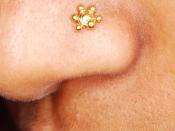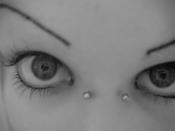Body piercing is a topic of much modern controversy. What most parents and employers do not realize is that it is a practice that has been going on for thousands of years and is not just some recent, rebellious fad. Most individuals who are interested in being pierced do not realize this either. There are deep and ancient roots to many piercings. Most parts of the anatomy adorned now primarily for aesthetic purposes were originally pierced with great cultural and social significance.
The most common placement for a piercing is the lobe of the ear. This is true in modern, western culture as well as in ancient civilizations. The reason it was so common and popular in ancient tribes is the same reason as it is now - this part of the body can be pierced with great ease. This would also be why it was the first recorded attempt at body piercing.
The oldest body ever discovered is a 5,000-year-old mummy found inside an Austrian glacier in 1991, with ear piercings enlarged to 7-11 millimeters (Painful Pleasures, 1998). The ear piercing was most likely employed for magical purposes in its earliest days. Many primitive tribes held the belief that demons enter the body through the ear, but are repelled by metal, thus pierced ears kept one safe from possession (painful Pleasures). In 1440, The Bible cites that Hebrew servants had their ears held to a doorpost and pierced with an awl to indicate that they were to be identified with a particular family (LeRoi).
Sailors usually had pierced ears, believing it led to improved eyesight. If their bodies washed to shore the jewelry was used to pay for a Christian burial (Body Jewelry Shop). Piercing the ear lobe has also been used as a signal of wealth amongst the...


